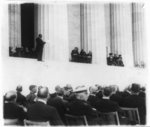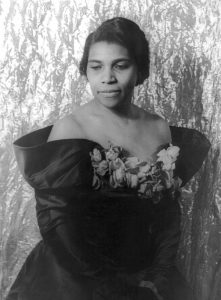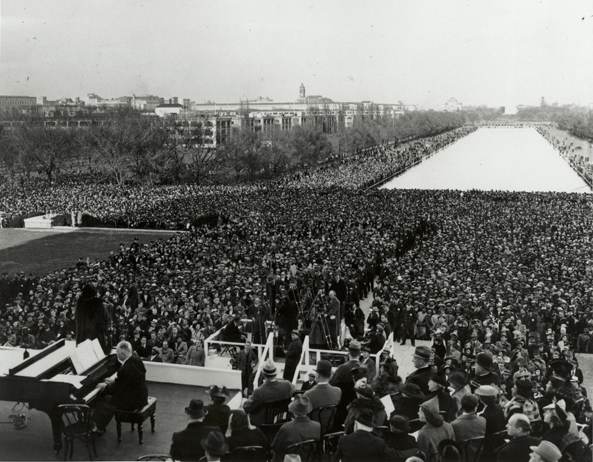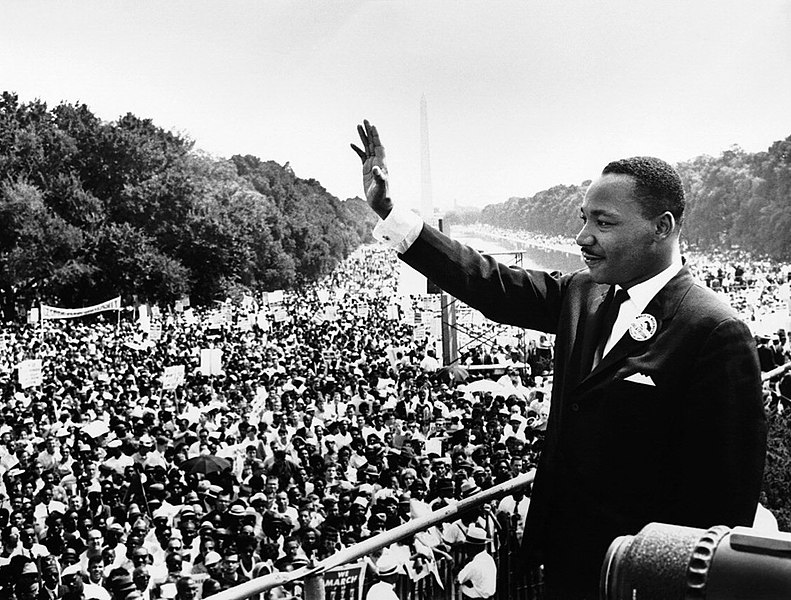
Connections: The Lincoln Memorial Steps
When studied as isolated events, history may seem like it is only about dead people and dates. But Studies Weekly helps you bring history to life by making connections between people and events.
History can be very exciting and energizing when looked through the eyes of those who lived it. They had families, friends, and social networks just as we have today. They didn’t know how things would turn out, but made decisions and actions according to the knowledge they had at the time.
In these Connections articles, we will share additional information for people and/or events introduced in the Student Edition, to help you show students the connections between the people and events they are learning about.
On the Lincoln Memorial Steps
At the dedication of the Lincoln Memorial on May 30, 1922, African-American Tuskegee Institute principal Dr. Robert Russa Moton spoke alongside other dignitaries, including President Warren Harding and Chief Justice William Howard Taft. Moton’s presence was a salute to the thousands of Black Americans freed by Lincoln’s Emancipation Proclamation and support of the 13th amendment.
“Let us strive on to finish the work which [Lincoln] so nobly began, to make America the symbol for equal justice and equal opportunity for all,” Moton said.
He was the first Black American to speak for equality from the Lincoln Memorial steps, but he would not be the last.

Fourteen years later, Howard University invited Marian Anderson – a renowned African American opera singer – to perform in their 1939 concert series. The response to her acceptance was so overwhelming that the university had to find a larger venue to accommodate the audience. They chose the Constitution Hall of the Daughters of the American Revolution (DAR), but the DAR banned African Americans from performing there. Even though Anderson had sung in the greatest music halls in Europe, the DAR made no exception.
First Lady Eleanor Roosevelt was so outraged by the DAR’s discrimination that she resigned from the group.
Walter White of the NAACP suggested Anderson provide the concert outside, and Secretary of the Interior Harold Ickes made it happen.

On April 9, 1939, Anderson stood on the Lincoln Memorial steps and sang for a crowd of 75,000 black and white people that stretched to the Washington Monument. Her performance opened new doors for music artists of color.
Anderson returned to the Lincoln Memorial steps in 1952 to honor Harold Ickes at a memorial service.
But even a century after Lincoln’s Emancipation Proclamation, African Americans continued to face inequality and injustice.

On August 28, 1963, 250,000 people braved the hot, humid weather to participate in the March on Washington, organized by civil rights leader Bayard Rustin. The peaceful demonstration concluded at the Lincoln Memorial, where several civil rights activists advocated for racial justice. Among them was Martin Luther King Jr.
Once again, the Lincoln Memorial steps witnessed an important moment in history as King delivered his “I have a dream” speech to the nation and the world.
The steps of the Lincoln Memorial have been and will continue to be a place to stand for justice and equity.

Resources:
- https://www.npr.org/2014/04/09/298760473/denied-a-stage-she-sang-for-a-nation
- https://www.npr.org/artists/102980721/marian-anderson
- https://www.politico.com/story/2019/02/12/lincoln-memorial-dedication-ceremony-1162593
- https://www.nps.gov/linc/learn/historyculture/lincoln-memorial-design-individuals.htm
- https://kinginstitute.stanford.edu/encyclopedia/rustin-bayard
Social Studies
Standards-aligned lessons that spark curiosity
Studies Weekly Online
Less prep, more impact on students
Health & Wellness
Boost your students’ emotional wellness skills
Science
Encourage students to investigate through hands-on learning